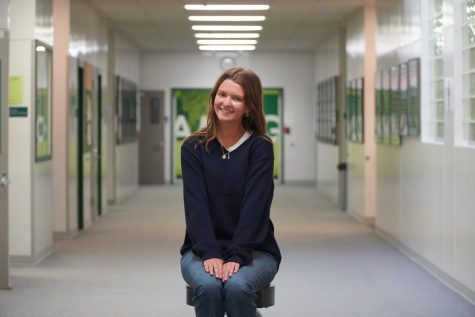The “Winter Blues”: Why They Happen and How to Help
Photo by Vladimir Haltakov on Unsplash
During the winter, many people experiences seasonal affective disorder (SAD).
An extra hour of sleep was awarded to the country on November 7, puffer jackets have been omnipresent on campus, Christmas decorations have appeared, and carols have arrived on the radio— winter is here.
Although winter brings festivities and time to connect with family and friends, and food, many may notice a change in their personalities during this time: feeling more fatigued, irritable, and all-around melancholy.
While you may be aware of your own yearly “winter blues,” it’s important to recognize how and why this happens, and take steps to combat seasonal funks, which, in turn, will help your mental and physical health.
Seasonal affective disorder (SAD) is a disorder that is related to changes in seasons, light exposure, and circadian rhythms (the scientific term for what regulates sleep cycles). Symptoms include fatigue, depressive/anxious emotions, and loss of interest in social or extracurricular activities.
AP Psychology teacher Malia Bernards highlights why residents of the Pacific Northwest are biologically and socially predisposed to SAD and other similar conditions and emotions.
“Our environment really does impact our biology. It specifically affects our circadian rhythms, which especially relates to how much light exposure we receive in a day. During winter in the Pacific Northwest, where we tend to get a lot more rain, a lot more clouds, and a lot less light. So, SAD is a lot more prevalent in our darker climate environment,” Bernards said.
Junior Bianca Sarich shared how the winter months affect her mental environment and routine.
“Usually I get eight or nine hours of sleep, but in the winter I usually end up getting five or six because I feel like sports and homework really start to pick up during this time. I also feel tired and run down a lot earlier and frequently than in the summer or spring,” Sarich said.
Studies have shown teenagers may experience SAD conditions more than adults do.
“How it relates to teens is a really important issue, because as adolescents, our brains are still growing and developing, so the environment we are in (light exposure, amount of sleep we get, nutrition, diet), all those things affect our mental well being. It really is a holistic approach to how we approach our mental health. With adolescents, because our brains are still developing, we are more sensitive to all of this, and our brains are building these neural pathways, so it’s really important that as we are developing and growing, we are being very conscientious about all these different factors,” Bernards said.
So, how do teens work through these unfavorable environmental and biological factors?
Bernards has a simple answer: “The big three: nutrition, sleep, and exercise”.
And, teens agree.
“Trying to keep a balance between your school and personal life is really important. I’ve found that prioritizing being active and not letting homework and school overload things that make me happy helps a lot during winter stress,” Sarich said.
Bernards also highlights two lesser known preventative measures for SAD.
“Something that is very important is supplementing vitamin D, as we know we have deficiencies of this across the board. Sunlight gives us a lot of vitamin D, and in the Pacific Northwest, where we don’t receive a lot of vitamin D in the winter months, we have a greater prevalence of disorders because of our limited amount of vitamin D,” Bernards said.
The National Institute of Health recommends teens 14-18 years take 600 IU of vitamin D daily. Vitamin D is known to fight disease, reduce depression symptoms, and support nervous system health.
“You also can think about incorporating meditation, or prayer, or just taking down time to help support your well-being,” Bernards said.
Finding time to turn the outside world off, both online and school, is crucial in cultivating mental health. This season, look for your favorite tools to brighten the winter blues.









